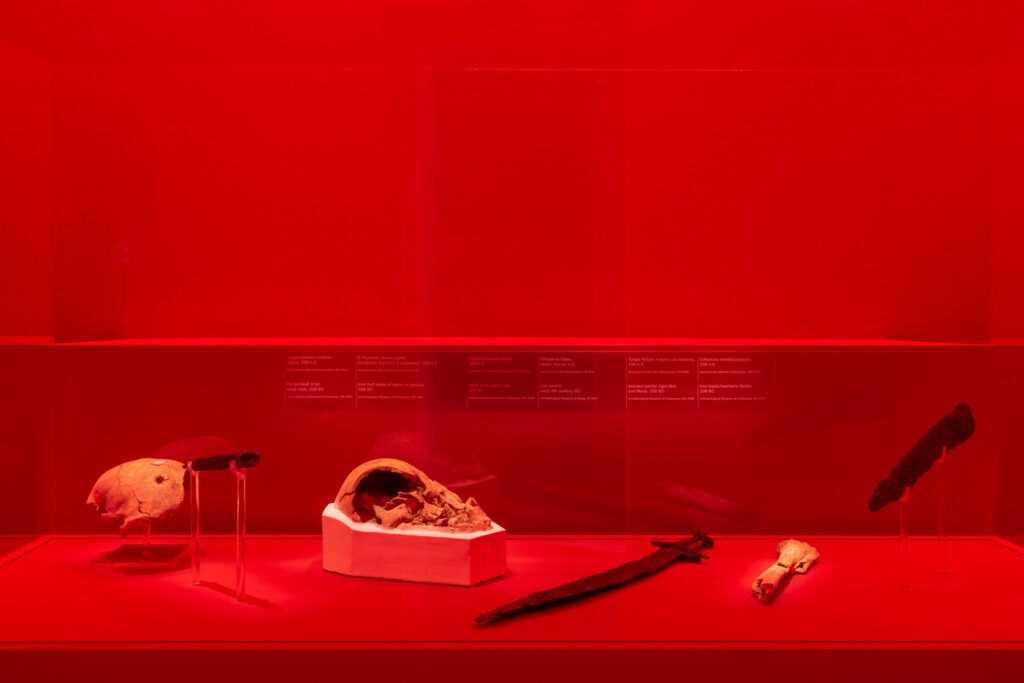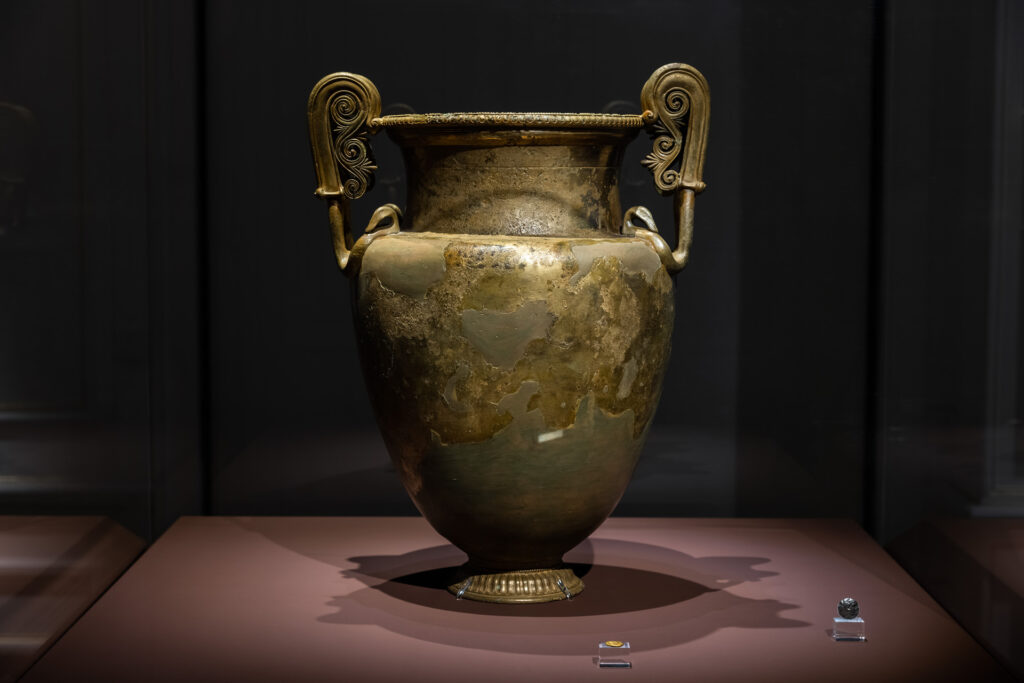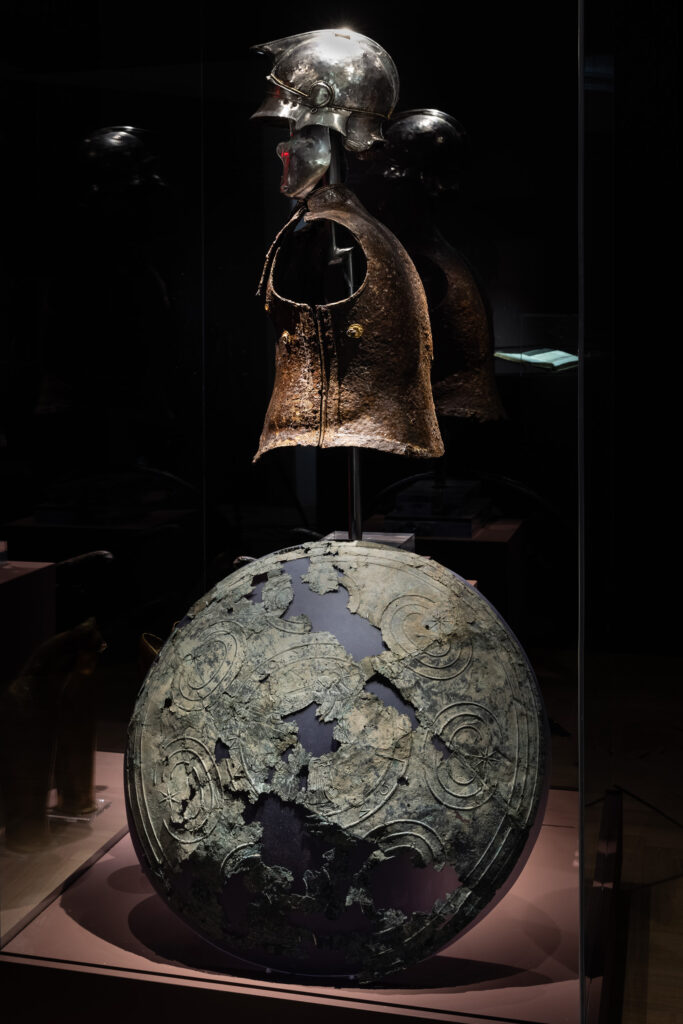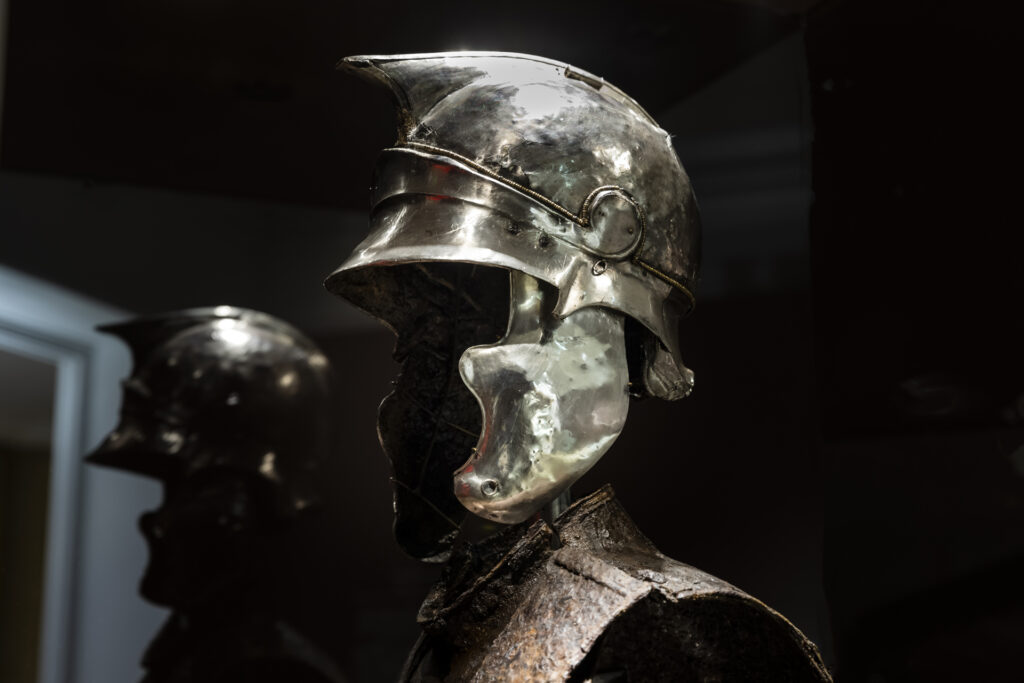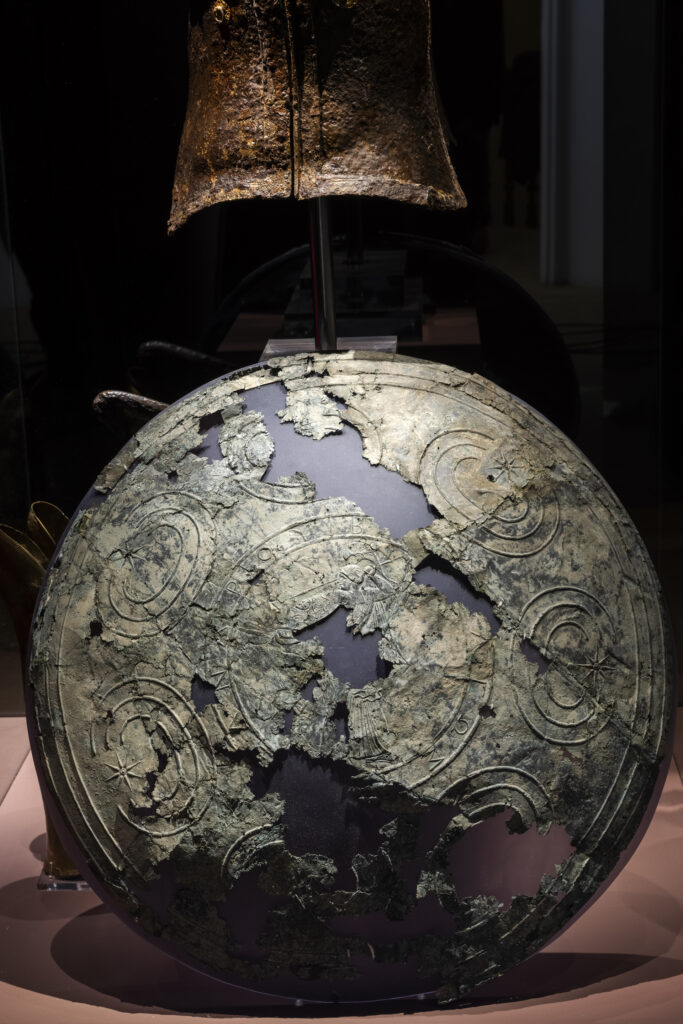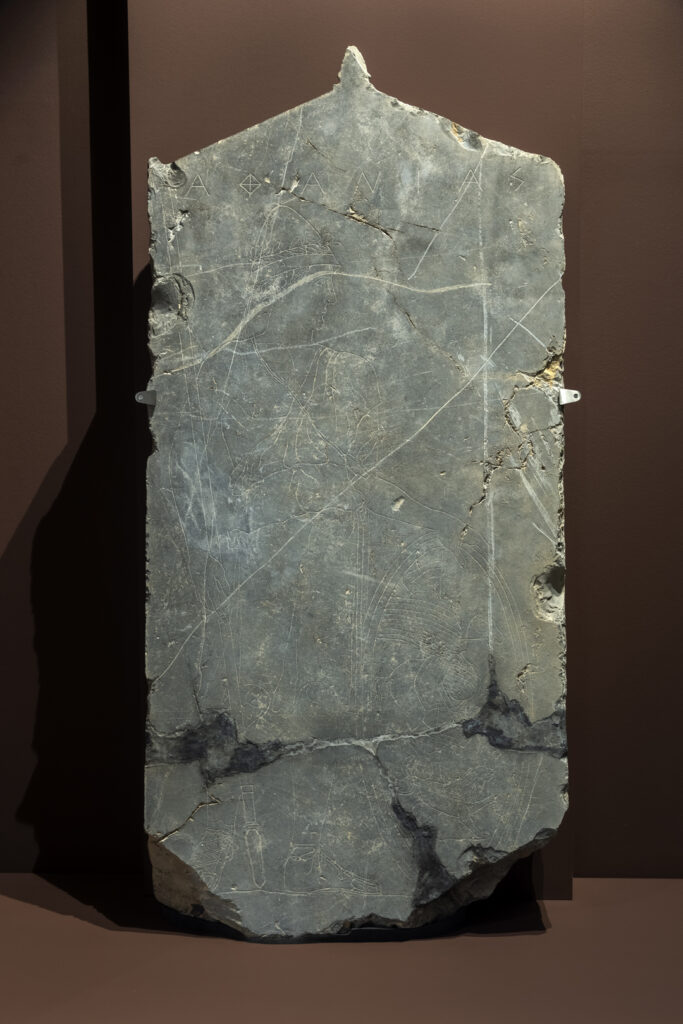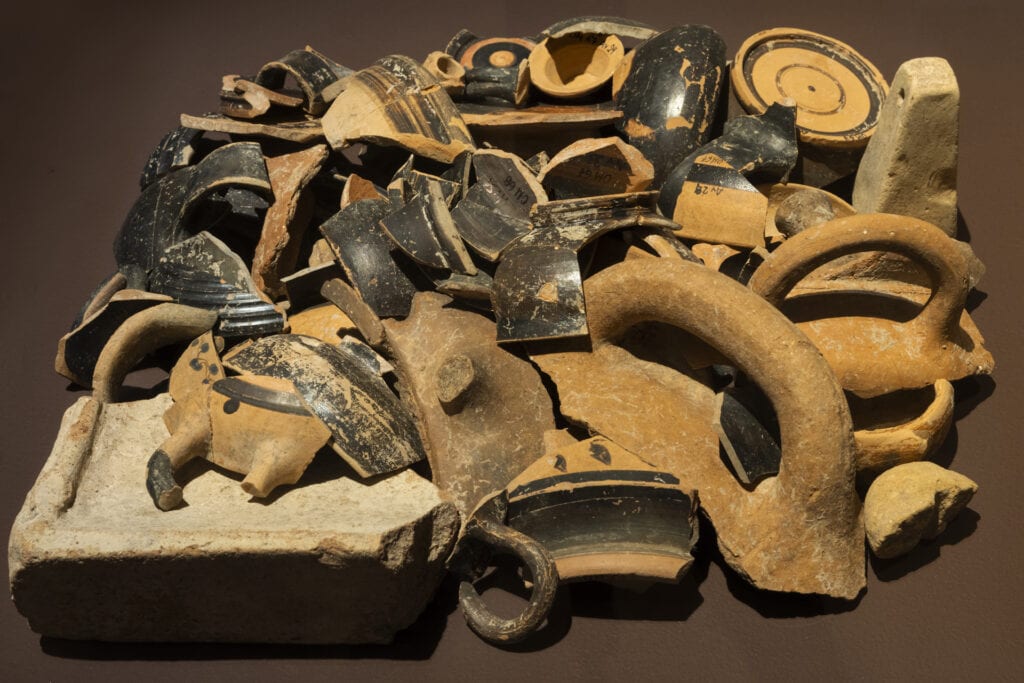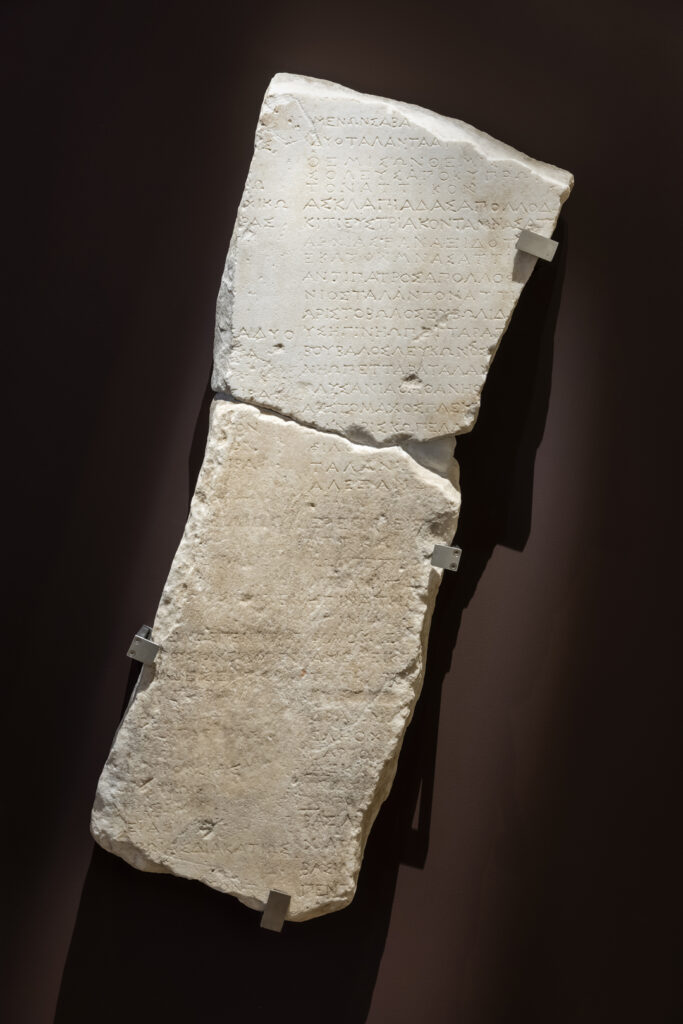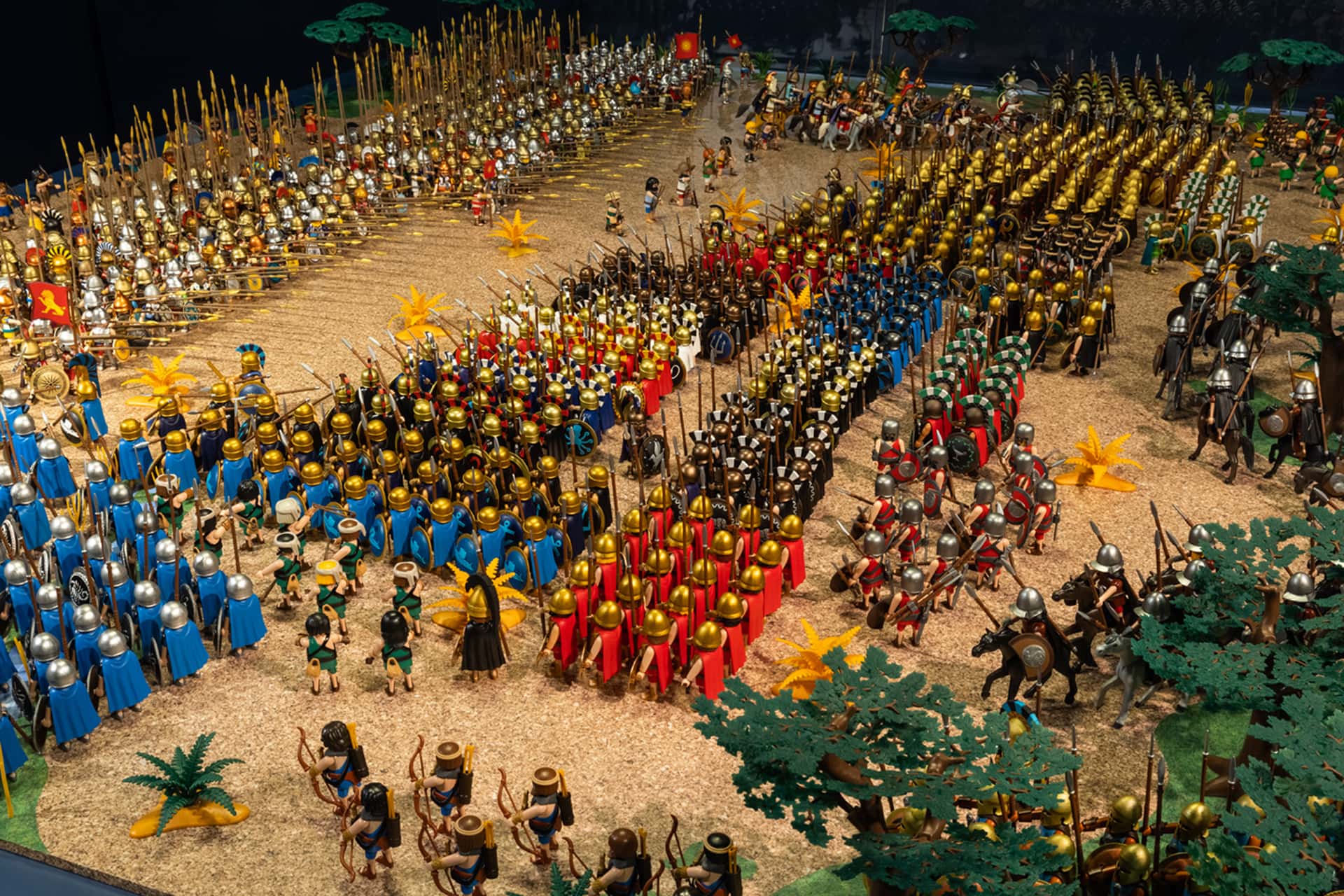Chaeronea, 2 August 338 BC:
A day that changed the world
ARCHAEOLOGICAL EXHIBITION
DECEMBER 14, 2023 UNTIL APRIL 23, 2024
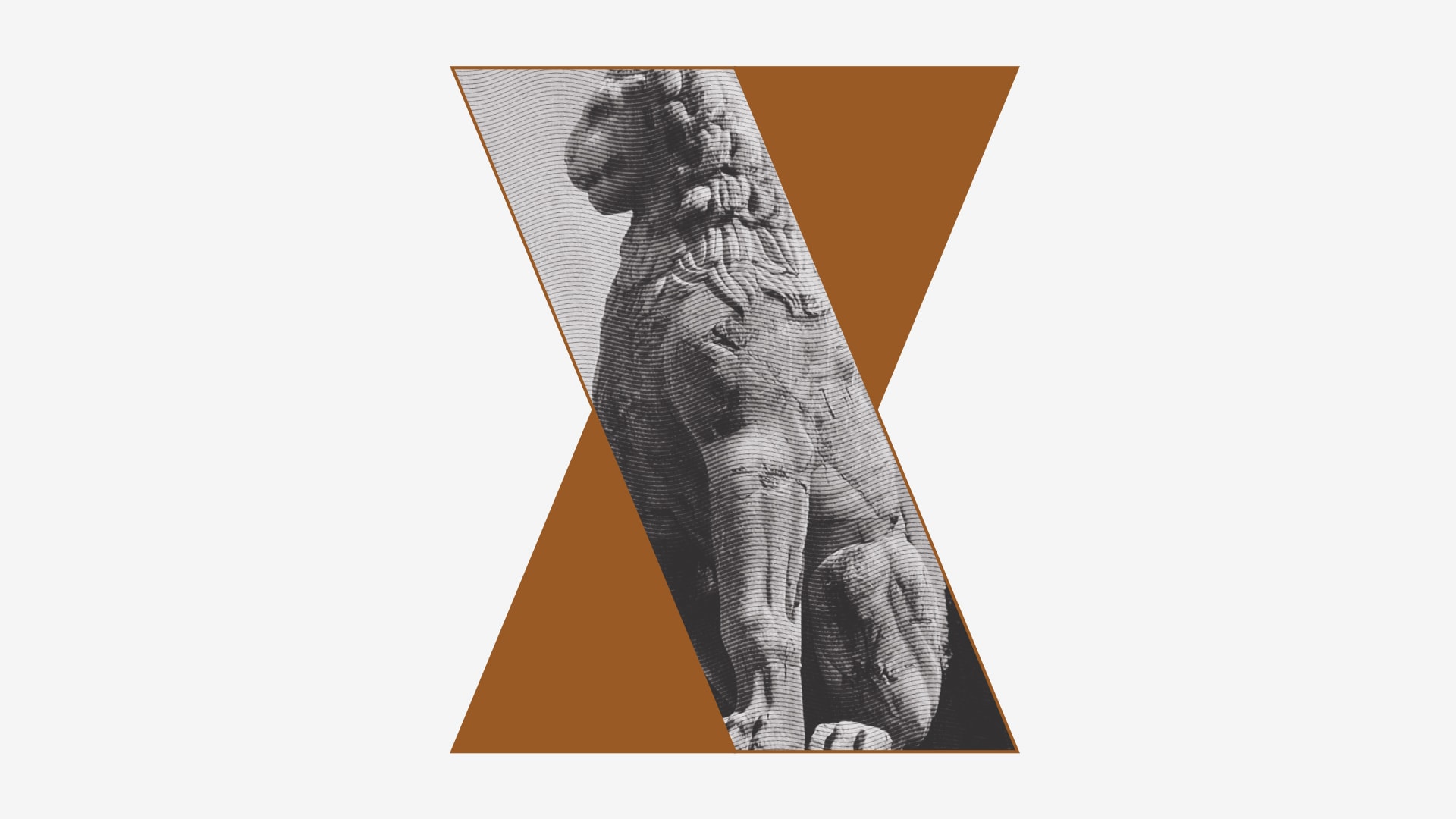
Philip puts into the hands of the young Alexander the leadership of the cavalry, the body that will face the Theban Sacred Band and eliminate it. The consequences of the battle had an impact on the history of the world: after this battle, the army of Philip and, above all, of Alexander will reach the borders of the known world and bring outstanding wealth to the Greek area from the treasuries of the Persian kings. The Hellenistic period saw the disruption of the traditional political balances of the Greek cities and the redefinition of social structures. City-states are absorbed into a new administrative structure, that of the kingdom, where decisions are no longer made exclusively at the city level. It is a form of administration that closely resembles the member states of the European Union today. This was the period when a ‘new man’ came to be, one who – as described by Homer – ‘knew many states, learned the councils of many people’.
HIGHLIGHTED EXHIBITS
Much of the archaeological evidence in the exhibition is presented for the first time. These are objects from the excavations of the Polyandrion of the Thebans and the Tumulus of the Macedonians. Objects that are either not fully published and known to the academic community, or are held in museums in the wider Greek region. Further, many of the exhibits were comprehensively studied for the needs of this exhibition and are being published for the first time, having been held in storerooms of either the local Museum of Chaeronea or the National Archaeological Museum in Athens.
Among the artefacts of the exhibition there stand out the unique burial assemblage of the warrior from Igoumenitsa with its unique iron cuirass and silver-plated helmet, the Macedonian shield of exceptional aesthetic and historical importance with the inscription reading “of King Alexander” – an illicit antiquity from an illegal excavation, the golden staters of Philip, Alexander and his Successors, the bones of the members of the Sacred Band and of the fallen Macedonians, and the material from the unique tomb at Tanagra, a tangible symbol of the importance of the battle within the wider region of Boeotia as well.
Regarding the work ‘Alexander the Great’ (1981) by Andy Warhol loaned from MOMus – the Museum of Contemporary Art, it is a one of the Alexander the Great series realized by Warhol after a commission from Alexander Iola. The Portrait of Alexander the Great depicts the earliest ‘celebrity’ that Warhol immortalized and is the only work created to honour an authentic ancient work of art.
An important part of the exhibition is also dedicated to the presentation of the actual historical documents and reports written by those pioneers of Greek archaeological research, Panagiotis Stamatakis and Georgios Sotiriadis, during their excavations at the Theban Polyandrion and the Macedonian Tumulus at the end of the 19th century and the beginning of the 20th century, respectively. This is done to give the fullest possible picture of the way archaeological research brought to light the very battle itself. Also of interest is the evidence on how the modern Greek state handled the battle and its monuments, as well as its reception by the press of the time. The battle, despite its importance, was quite forgotten until travellers mostly from the end of the 18th century begin to gradually discover it, when the marble fragments of the fallen Lion attracted their attention. References in diaries and pictorial representations aroused the interest not only of the academic community, but also of the local population.
EXHIBITION SECTIONS
The protagonists
b. Alexander
c. Demosthenes
The opponents
b. The coalition of Greek cities: The Sacred Band and Athens
Managing the memory of the battlefield
b. The Tumulus of the Macedonians
c. Macedonian burial practices
Commemorating the battle in Athens
Boeotia and Thebes after the battle
The new Hellenistic world after the battle
b. ‘Macedonization’ of Boeotia
The archaeological rediscovery of the battle (P. Stamatakis and G. Sotiriadis)
The modern exploitation of the battle
b. Painters
c. International, national and local press
The battle of Chaeronea…today
THE BATTLE OF CHAERONEA TODAY
In this last section, an innovative approach to the battle using modern means is attempted, targeting young audiences who do not necessarily often frequent museums. In this section one is able to see a diorama of the Battle of Chaeronea using handmade custom Playmobil figures by the collectors Αngelos Giakoumatos and Tasos Pantazopoulos created for the exhibition with the support of Playmobil Hellas as well as a brief narration of the story using comics.
Also in this area, visitors can experience for themselves this pivotal moment in the ancient Greek world. Two films created by Ubisoft based on the video games Assassin’s Creed Odyssey and Assassin’s Creed Origins illustrate and explain the historical setting before and then after the Battle of Chaeronea. Those two films, created especially for the exhibition, help visitors to imagine what people, cities and lands might have looked like at the time.


